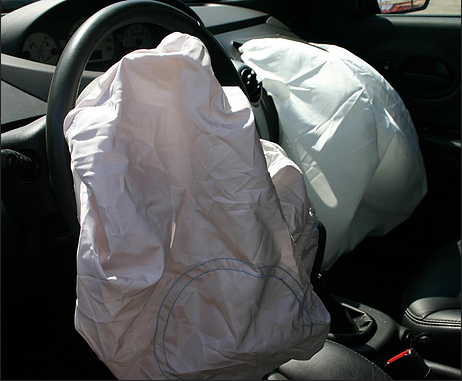
Airbag Cases
In 2008, Takata first recalled 4,000 airbags in Honda vehicles. Since then, there have been 20 additional recalls for these dangerous airbags in just about all types of vehicles, not just Hondas. Unfortunately, it took until May of 2016 for the federal safety regulators in three independent investigations to conclude that the necessity of a larger recall and universal notification. Through this scientific research and discovery, these investigations proved that long-term exposure to changes in air temperature and moisture can make the ammonium nitrate propellant in the Takata air bags dangerously powerful. These findings sparked the federal mandate for Takata to expand its airbag recall to more than 60 MILLION air bags, which equates to approximately 1 out of every 5 vehicles on the road today.
Although Japanese auto parts maker Takata Corporation filed for bankruptcy protection last summer, claims can still be made for injuries sustained from its dangerous airbags, despite whether the injured person caused the accident or not, and despite whether or not the
person was the driver or a passenger in the vehicle.
Takata air bags are known to have killed at least 20 people and injured hundreds more. The exact number is not known because many of the airbag injuries go unrecognized, as these injuries are viewed merely as part of a car accident, or were sustained by the person driving
the vehicle that caused the car accident, and thus the injured person does not believe there is any recovery mechanism available to them for their injures. However, this is not the case. There is still a potential cause of action for the airbag injuries, separate and distinct from the car accident injuries, no matter who caused the accident, or if the injured person was the driver or passenger.
How the dangerous airbag explosions work is this; airbags are actually filled with gas, not air. This gas is created by a burning propellant which is compressed into an aspirin-sized tablet and placed in a metal tube called an inflator. When the vehicle is involved in a crash, the tablets are ignited and converted from solid to gas, which erupts out of the inflator and into the bag in milliseconds. The difference with Takata airbags is that Takata’s propellant, ammonium nitrate, can become unstable after long-term exposure to changes in
temperature and moisture. When the unstable compound ignites, it can explode with too much force and spray metal fragments directly into the driver and passengers of the car.
This bomb-like explosion has caused unnecessary deaths, horrible life-altering injuries and devastation to many families. In fact, ammonium nitrate is what Timothy McVeigh used to blow up the Oklahoma City federal building in 1995. Ammonia nitrate is as explosive as dynamite, and is one tenth the price of a similar product which was previously used by Takata for its air bags known as tetrazole.
On February 22, 2018, Nevada, along with 43 US States and Territories reached a settlement with Takata over its defective airbags. The settlement consent decree is not final as it must be approved by the United States Bankruptcy Court. In February 2017, Takata also pled
guilty and agreed to pay $1 BILLION in penalties for concealing airbag defects. In its plea deal, Takata admitted to hiding evidence that millions of its airbag inflators can explode with too much force, hurling lethal shrapnel into drivers and passengers. This is the largest recall in U.S. automotive history.
The National Highway and Traffic Safety Administration (NHTSA) has established the website www.safecar.gov/rs/takata for consumers to determine whether their vehicle is affected by the recall and to sign up for status updates.
If you or a loved one was injured by an airbag, please contact Attorney Billie-Marie Morrison at 702-380-2800.